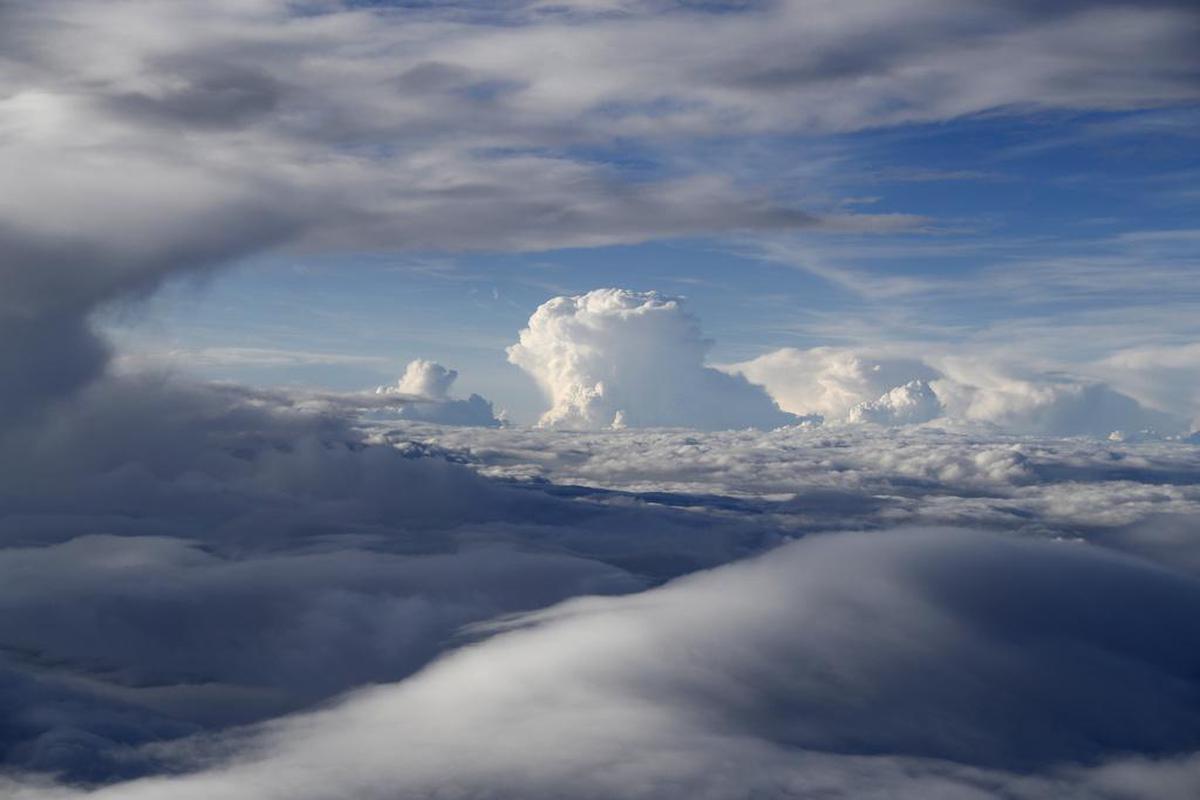Huge masses of water swell in the sky
The Mississippi River is 27 times the volume: the rivers in the atmosphere carry moisture through the air. Climate change can make it grow — with consequences for people.
Many complex processes in the atmosphere are invisible to humans: A view of a cloud landscape over Switzerland.
Photo: (Keystone)
Rivers are not just part of the water cycle on Earth. There are also rivers of some kind in the sky. In technical terms, they are called “atmospheric rivers”. It is by no means the only means of transportation there. But some of the most interesting are because of the enormous mass of water they can contain: the celestial rivers of the world, which can be thousands of kilometers long and hundreds of kilometers wide, carrying as much water as 27 Mississippi-shaped rivers; Much of the transport of moisture is from the subtropics and mid-latitudes towards the poles.
Especially in the western coastal regions of North and South America, South Africa and Europe, it is an important source of moisture, but is often the cause of heavy rainfall and strong winds.
Sky rivers can often lead to floods
It is invisible to the human eye because it mostly contains water vapor, which only condenses and forms visible clouds when it reaches cooler areas or rises into a mountain range. It can only be observed by satellite and radio probe. How these rivers originated is still highly speculative, says Manfred Wendish of the University of Leipzig. «But it is very plausible that it will intensify with global warming.» Ultimately, it brings more moisture and energy into the atmosphere.
In a paper recently published in “Nature Climate Change,” Seung Baek and Juan Lora of Yale University model the evolution of celestial rivers: According to this, air pollution previously had a weak effect that compensated for the intense effect of warming.
However, global warming in the coming decades is likely to lead to “sharp intensification”: celestial rivers can thus often overflow. Which, under certain conditions, can also lead to severe precipitation and flooding.
But there is another reason to watch the evolution of celestial rivers: they can form a pattern of warming because some extend farther north. “You have to imagine atmospheric rivers like hoses,” says Wendisch. “You can inject moisture like a syringe, which can then spread throughout the Arctic.” Heat and water vapor seep into the Arctic, which acts as a greenhouse gas and also forms clouds. They cover the area like a warm blanket. Such processes can help the Arctic to warm up especially quickly.
Found an error?Report now.

“Typical entrepreneur. Lifelong beer expert. Hipster-friendly internet buff. Analyst. Social media enthusiast.”







More Stories
Pedro Sanchez is considering resigning after filing a complaint against his wife
Extreme heat warning in Thailand and the Philippines
Argentine President Miley announces a budget surplus – News